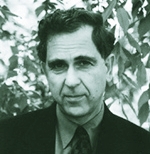
Here is the first of two articles I've written this fall on the rise of partisan antagonisms in America. This is a column from the October issue of The American Prospect; the second article will be out shortly in The New Republic.
In this column, I emphasize that the 2008 election confronts voters with two presidential candidates who embody two different images of American national identity. And this contrast grows out of the deep sociological as well as philosophical divide between the parties.
The American CollisionI wrote that column in early September. Since that time, the financial crisis has reduced the salience of national identity in the election and raised Obama's chances of victory. As of now, not only does Obama have more than a fighting chance; we may be on the verge of a Democratic victory that could open a new chapter in the history of American liberalism.
By Paul Starr
Earlier in this election cycle, many observers suggested that if Barack Obama and John McCain became their parties' nominees, they would each moderate the polarizing tendencies in American politics. In the wake of the two parties' national conventions, that notion seems like a frail hope. Something is driving polarization, and it isn't the personalities.
It also isn't trends in public opinion. As Morris P. Fiorina argues in his book, Culture War?, public opinion surveys show that on most issues Americans are still bunched in the middle, contrary to the widespread belief that they are more deeply divided than they were a generation ago.
Of course, party differences have sharpened as a result of the ideological sorting out that's come with the defection of white Southerners from the Democrats and the conservative revolution within the GOP. At first glance, it looks like two opposite and equal shifts. The Democrats have become more liberal with the loss of Southern conservatives as the Republicans have become more conservative with the disappearance of liberals and moderates from their party.
But that nicely balanced picture doesn't fully reflect what's happened. Compare an older generation of Republican leaders to their successors--for example, George H.W. Bush to George W., George Romney to Mitt--and the younger ones are distinctly more right-wing. Democrats haven't seen a comparable generational shift. To borrow a term from Paul Pierson and Jacob Hacker, what we've had is "asymmetrical polarization": Republicans have moved further right than Democrats have moved left.
This year, McCain was expected to bring the GOP back toward the center, not just because of who he is (or is supposed to be) but because of the dismal condition of the Republican brand. Instead, after locking up the nomination, he veered to the right, turning away, for example, from his earlier positions on the environment that gave him a reputation for independence (he had already changed his stance on immigration, Bush's tax cuts, and other matters). The base demanded concessions, and he made them. And nowhere was that pattern more evident than in McCain's choice of Sarah Palin after he backed down from picking Joe Lieberman.
Was all this inevitable? No, the McCain of Bush's first term might have resurfaced to wage a more centrist campaign, but the pressures to conform--the imperative to rouse the party--were formidable. And those pressures ultimately reflect social realities--the social make-up of the Republican Party, which was on full display at the party's national convention.
What is really at the root of party polarization is social tensions. Sociologically as well as ideologically, the two parties have become a stark contrast. The delegates to the Republican Convention were nearly all white (only 1.5 percent black and 5 percent Hispanic). Their hearts would not have been in a centrist campaign. What got them excited were the old denunciations of the liberal media and "Eastern elites" by speakers who tried to reignite the culture wars. With a more socially and culturally diverse base, the Democrats seek to downplay polarization, while the more homogeneous Republicans cannot resist trying to inflame it.
Despite the changes in its regional support, the GOP occupies the same sociological space today as in the 1920s, when it was a party predominantly of small-town Protestants fighting off a rising urban, immigrant America. At that time, the dominant conception of white Americans excluded recent immigrants, such as Jews and Italians, whereas now it includes them. But structurally the situation was the same: a white, self-consciously Christian party against a more diverse, urban one, with the former inclined to see the election as a contest between the virtues of honor, patriotism, and moral uprightness that its members identify with their own group (and their candidates) and the vices that they project onto the other.
McCain and Obama stand in as proxies for two versions of America. When voters hear Obama, they are responding not just to him but to a new multicultural America that they find attractive or frightening. And when they hear McCain, they are responding to a traditional America--or rather, an idea of that America--that they are determined to preserve or willing to see change.
McCain's America has historically dominated Obama's. White has dominated black, old has dominated young, the appeal of soldierly virtues has dominated those of the peacemaker. If Obama wins the presidency, it will turn the traditional order of things on its head.
But that has happened before. After the 1920s, FDR assembled a new majority, and in the 1960s LBJ helped to build another one. BHO has a fighting chance to do the same.
Labels: American politics


